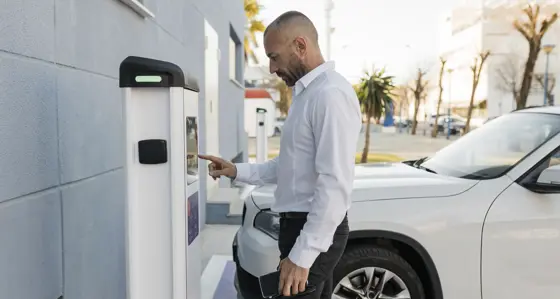
We modelled the future of electric vehicles in Belgium with Synergrid
19 February 2023
Electric vehicles are here. And with them, new ways to move and new demands on the energy system. To power a switch to cleaner transport long-term, and keep the lights on short-term, Synergrid – the federation of electricity and natural gas network operators in Belgium – had two big questions to answer: what would more electric vehicles on the road do to the network that powered them? And how could smart charging help?
We showed the value of action, and the cost of doing nothing
We needed data, and lots of it. We collated info on population density, socio-economic factors, plus data from around 500,000 substations and feeders. With it, we built a model that could look into the future.
First, we modelled what would happen if electric vehicles hit the road and no one did anything about it – power cuts, shortages, a grid overwhelmed.
Then, we looked at the impact of action. What if you got people to charge on the parts of the grid that had power to spare? What if you nudged drivers to power up with their own solar supply? What if drivers favour fast charging at fuel stations or shopping malls over slow charging at home?
Synergrid were with us every step of the way. We ran regular workshops to thrash out questions, check assumptions, get input on results, and stay on track to deliver a model Synergrid could really use.
A model that Synergrid continues to rely on
We have continued supporting Synergrid by updating the model to account for changes in the electric vehicle market that have an impact on the grid, such as trend towards smaller vehicles, more emphasis on efficiency and an emerging preference for higher charging rates. Changing European and national policies, like proposed bans of cars with an internal combustion engine have a noticeable impact too.
Synergrid can now model when, where, and how fast people might start buying and using electric vehicles, and what things will look like when they do. Crucially, the model shows the vital difference smart charging could make.
Every year more electric vehicles hit Belgium’s roads. Now, Synergrid has a powerful tool in their corner, informing conversations with regulators and policymakers, and powering smart choices about the future of the Belgian grid.
Related Insights

Trump trade tariffs: Impact on the UK EV uptake
The global automotive industry is at a critical juncture, shaped by intersecting forces of electrification, geopolitical trade tensions, and national decarbonisation policy.
Read more
From early adopters to early majority: Driving the next phase of EV growth
As EVs are moving beyond the early adopter phase, what are the principles needed for mass market adoption and progressing towards net zero targets?
Read more
Commercial fleet electrification – adoption is accelerating, but barriers remain
With 50% of new car registrations in the UK being registered by businesses, it’s vital for companies to start electrifying their fleets.
Read more
The value of electric vehicle charging flexibility
How can EV charging provide the energy system flexibility to shift away from fossil fuels?
Read moreIs digital and AI delivering what your business needs?
Digital and AI can solve your toughest challenges and elevate your business performance. But success isn’t always straightforward. Where can you unlock opportunity? And what does it take to set the foundation for lasting success?